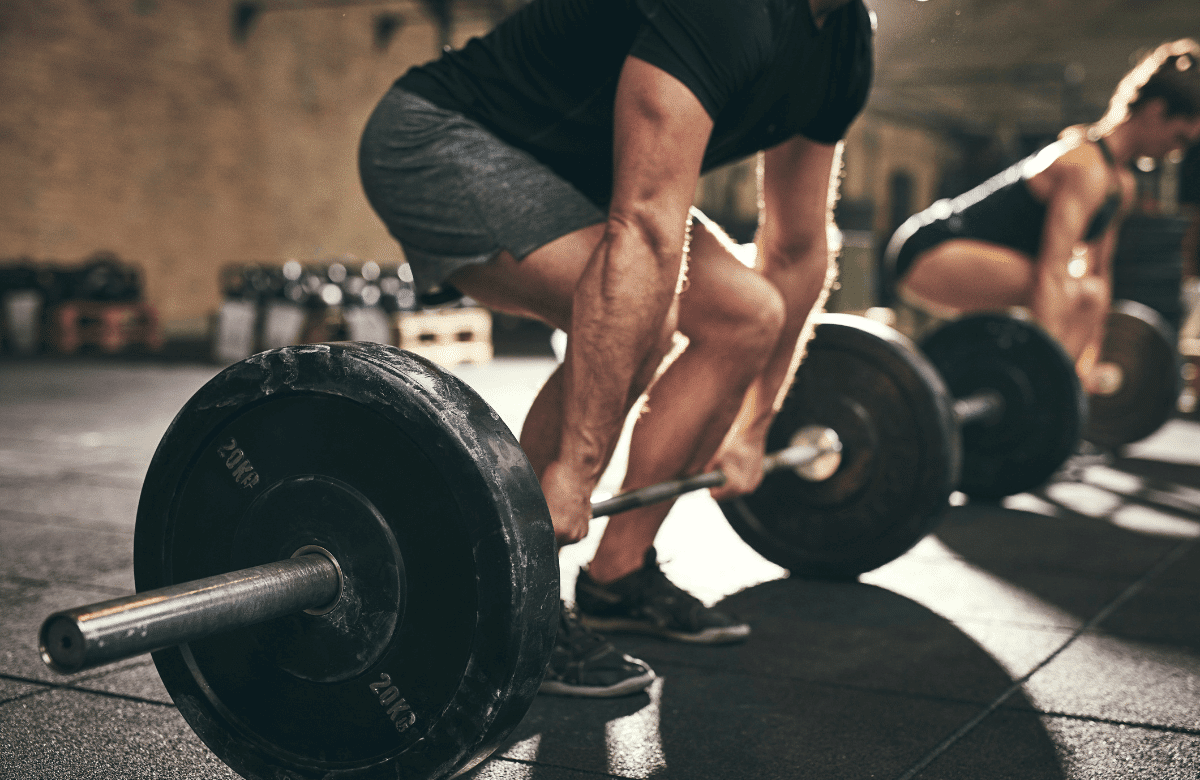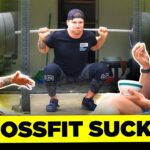The right type of training program is critical for gaining muscle mass, strength, and endurance. Without the proper regimen, you might not gain strength or be consistent, which will surely halt your progress.
This causes lifters to look for the most effective routines that help them break through plateaus while remaining interesting. So, what about full-body workouts? Are these programs a waste of time?
Absolutely not!
Full-body workouts are time efficient, help you develop the foundations, and can lead to serious strength gains. Here’s everything you need to know to get started.
Jump to:
- What Is a Full-Body Workout Program?
- What Are the Benefits?
- What Are the Downsides?
- What Should a Full-Body Workout Include?
- 3-Day Full-Body Workout for Beginners
- 3-Day Full-Body Workout for Advanced Lifters
- How Often Should You Exercise?
- Why Are Rest Days Important?
- What About Cardio?
- Frequently Asked Questions (FAQ)
What Is a Full-Body Workout Program?
As you can imagine, a full-body workout targets the entire body. But what does that actually mean?
Other workout routines split training days into different muscle groups. For example, some training splits alternate between significant muscles in the upper and lower body. Other programs will target individual muscles each training day.
Full-body training plans will engage all the major muscle groups in a single training session.
This doesn’t mean incorporating several sets of isolation exercises, though. Instead, full-body routines include sets of compound exercises to engage multiple muscle groups at a time.
Compound movements, like the barbell bench press, activate the shoulders, chest, and triceps. This way, you’re getting more bang for your buck with a single exercise.
What Muscles Does a Full-Body Routine Target?
Full-body workout routines engage all body muscles to maximize efficiency and training frequency. Full-body workout routines activate the following muscles:
It’s important to note smaller, supporting muscles, like the calves and triceps, will not receive as much activation. This is one of the downsides of the full-body workout program that we cover in more detail below.
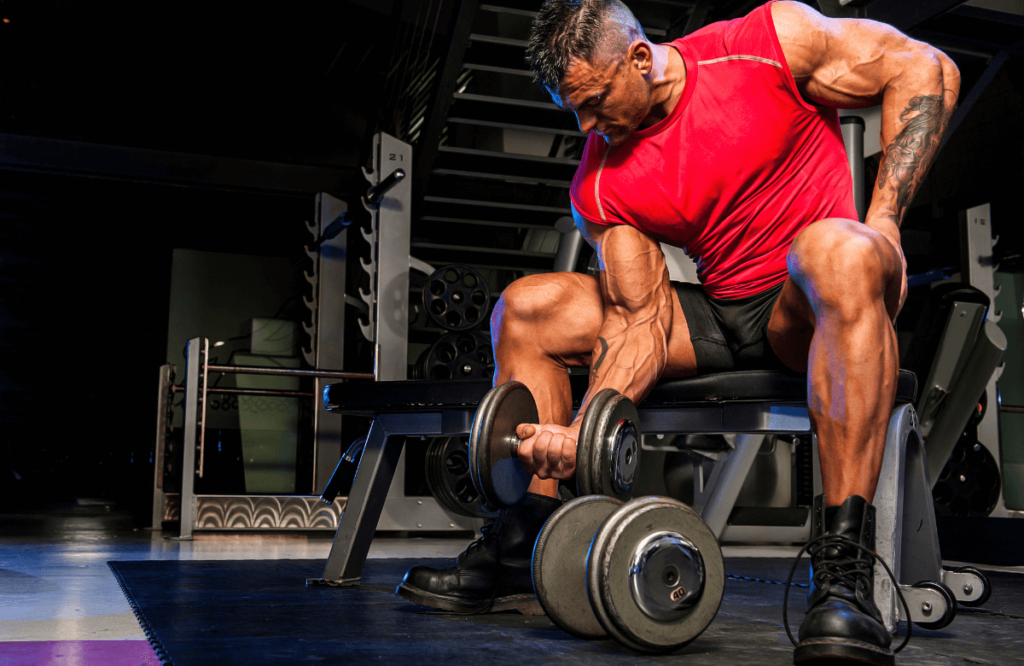
What Are the Benefits?
Many lifters use body splits where they target specific portions of the body or individual body muscles each training session. So, why would you opt for a full-body training program?
Beginner Friendly
Full-body routines are often recommended for beginner lifters taking the first steps on their fitness journey. But is this because newcomers can’t handle the complexities of a more advanced routine?
Certainly not!
Full-body bodybuilding workouts help newcomers build muscle mass, learn the foundations, and develop consistent gym habits.
Solid compound movements teach beginner lifters effective workouts, proper technique, and how to consistently gain strength. These foundations set the stage for a healthy lifestyle, other body programs, and fitness goals.
Time Efficient
One of the most significant advantages of full-body training plans is their time efficiency. Full-body routines incorporate high-value compound movements that engage larger muscle groups, meaning more return on your time investment.
Most beginner routines prioritize barbell compound exercises, so you don’t have to wait for different types of equipment or learn multiple techniques.
In most cases, advanced lifters and newcomers can complete training sessions in an hour or less. This is especially useful depending on lifestyle factors, like children, location, work, and other limiting factors.
Teaches the Basics
Full-body training is one of the cornerstones of beginner routines because it teaches the basics of barbell compound exercises.
Barbell movements are critical for gaining strength, regardless if you’re a professional bodybuilder or you just bought a gym membership. The reliance on compound lifting teaches techniques like the hip hinge, press, squat, and more.
These techniques are critical for maximal muscle growth and will follow you on your fitness journey.
Develop Full-Body Strength
Full-body training programs typically include heavy compound lifts, like the barbell bench press, squat, and deadlift. These are classic exercises for developing muscle mass and full-body strength.
What’s more, these are all functional exercises.
Heavy compound lifts help you develop functional strength, which is critical for everyday activities and athletic performance. You need functional strength to bend over, climb stairs, reach overhead, and other activities.
All of these tasks will get easier as you progress through your training program and gain muscle mass, stability, and coordination.
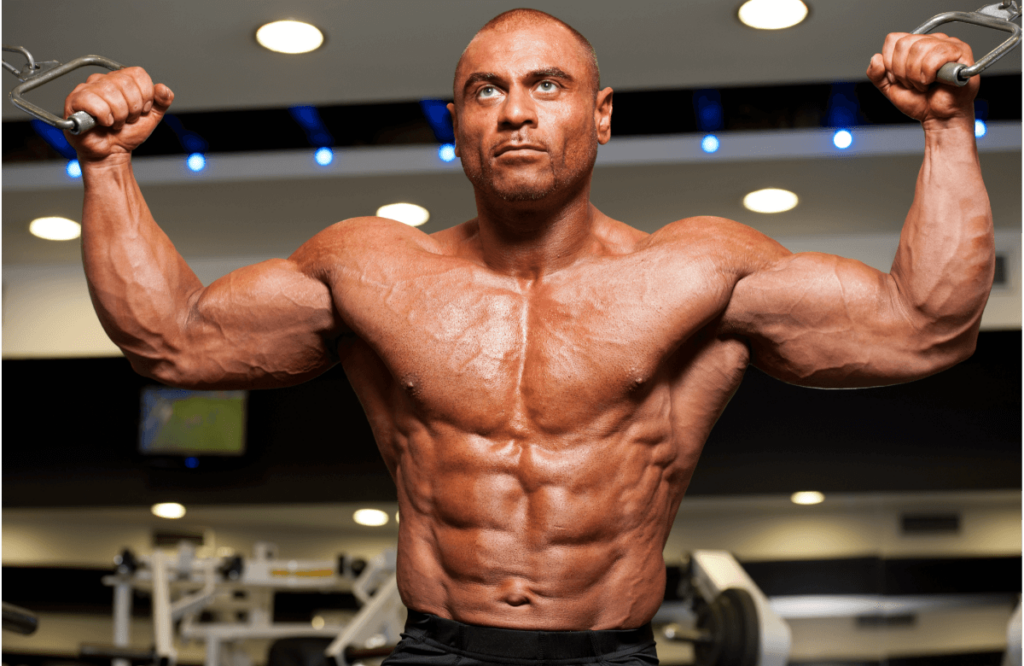
What Are the Downsides?
Don’t get it twisted; full-body training splits aren’t all sunshine and rainbows. Some of the downsides include less specialized exercise and low training volume, which can be particularly disadvantageous for advanced lifters.
Less Sets of Isolation Exercises
One of the most significant disadvantages to full-body training programs is that there are minimal to zero isolation exercises. Intermediate and high-level bodybuilders squeeze the most out of their training sessions by addressing weak points.
This is accomplished through accessory exercises that isolate individual muscles to develop more strength and size.
Unfortunately, this isn’t easy to accomplish with a full-body training routine. Smaller supporting muscles will be engaged, but they won’t receive enough attention compared to larger muscle groups.
Low Training Volume
Alongside lower stimulation for supporting muscles is less training volume.
Training volume is a critical factor for muscle growth. Muscles need consistent challenges so they can grow, recover, and adapt over time. Full-body routines may not offer enough frequency for muscle growth in certain portions of the body.
For instance, your biceps won’t receive enough attention if you’re never targeting them directly. This can lead to lagging muscles, muscle imbalances, and a less impressive physique.
Not the Best Option for Advanced Lifters
As an advanced lifter, you’ve surpassed your newbie gains, learned correct techniques, and developed consistent gym habits. You probably have specific body goals, like improving your triceps or one rep max.
Basic full-body routines might not help you break through plateaus or hit your physique goals.
You might need a more custom-tailored program to suit your goals, needs, and preferences. If you’re trying to improve your upper body, you might be better off with a PPL split with personalized isolation exercises.
If you want to increase your max deadlift, you might need to incorporate variations and accessory exercises for different muscle groups.
This doesn’t mean you can’t make a full-body split work for you; it just might be more challenging depending on your experience level.

What Should a Full-Body Workout Include?
Before you create a full-body training schedule or pick a program, it’s essential to know what to look for in a good routine. An effective full-body training program should incorporate the following:
- Centered around high-value compound movements, like the squat, deadlift, bench press and overhead press.
- Has realistic progression methods.
- Includes adequate rest days and training frequency.
It’s vital to perform compound movements that give you the most bang for your buck. What’s more, an effective full-body routine will have a progression method so you’re continuously developing strength, endurance, and technique.
Dedicated rest days are critical for building strength and muscle size. If your routine has you hitting the gym 5–7 days a week with minimal rest, it might be time to look for something more realistic.
Don’t panic if you’re new to the gym or don’t know how to create a training program. Here are a few options to consider:
3-Day Full-Body Workout for Beginners
The 3-day full-body workouts we recommend for beginners is Starting Strength.
Created by the renowned strength coach Mark Rippetoe, Starting Strength is designed to help beginners develop strong foundations. It focuses on the following exercises:
- Squat
- Bench Press
- Deadlift
- Overhead Press
These compound lifts work the entire body and help newcomers learn proper barbell movements. You complete three exercises each training day, three days a week.
Most of the exercises are performed for three sets of five reps, so gym sessions are relatively short.
Starting Strength uses linear progression, meaning you add weight to the bar each training session until you plateau. Depending on your progress, you might add 5–10 lbs to the bar each time you enter the gym.
Starting Strength is performed three days per week, similar to the following;
- Monday: Training
- Tuesday: Rest day
- Wednesday: Training
- Thursday: Rest day
- Friday: Training
- Saturday: Rest day
- Sunday: Rest day
Starting Strength is straightforward and one of the best programs for newcomers that allows you to build strength fast. You don’t need a personal trainer to get started; here’s a quick video to help.
3-Day Full-Body Workout for Advanced Lifters
Advanced lifters who know their one rep max for compound lifts should consider Jim Wendler’s 5/3/1.
This is another three-day training program, but it’s designed to help intermediate lifters break through plateaus and is much more complex.
5/3/1 focuses on the same lifts as Starting Strength but includes accessory exercises, like pull-ups, lunges, and tricep pushdowns.
The difference is 5/3/1 uses percentages of your max lifts. For instance, you might perform 65% of your maximum squat during one week and 75% the next. It also uses periodization, meaning it’s broken down into four-week cycles of varying intensity and volume.
The 5/3/1 training program will help intermediate lifters continuously develop strength and breakthrough plateaus whilst learning advanced lifting methods.
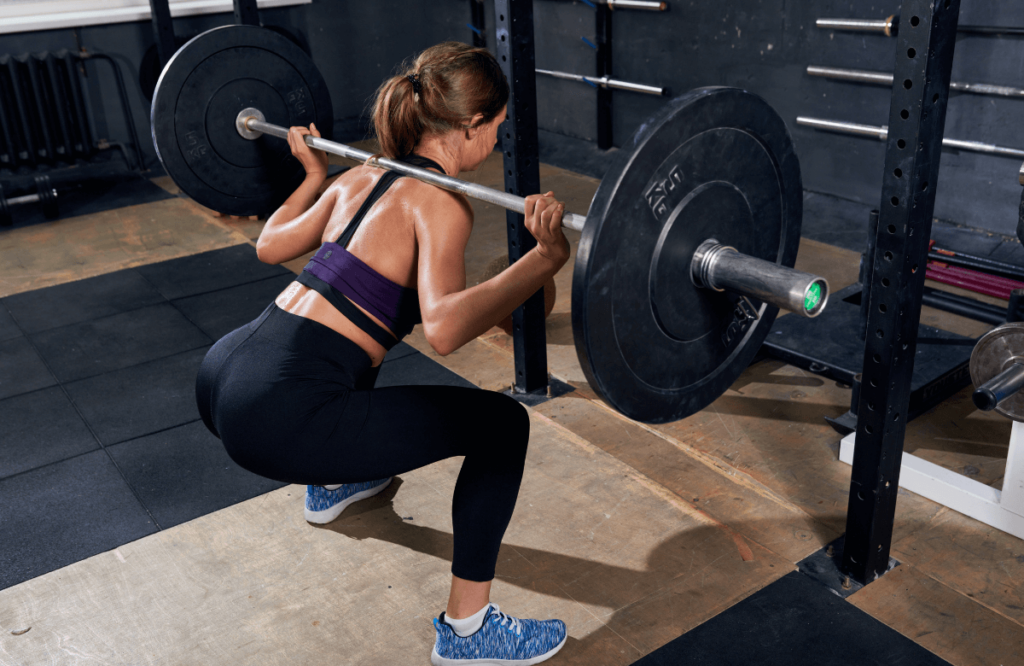
How Often Should You Exercise?
If you’re following a reputable program like Starting Strength or 5/3/1, you won’t need to worry about figuring out when to train and when to rest.
But figuring out training frequency can be a bit tricky if you’re using a custom routine.
The correct answer will depend on your training volume, exercise selection, fitness level, and several other factors.
If you’re performing full-body bodyweight workouts, you might not need as much rest, as these exercises can be less taxing. If your routine incorporates heavy compound lifts, you will likely need more rest.
Training Frequency
It’s best to train no more than four days per week with most full-body training schedules. Most regimens program three days per week with a rest day in between each session. For example, you might train on the following days:
- Train on: Mon/Wed/Fri with Tues/Thurs/Sat/Sun off.
- Train on: Tues/Thurs/Sat with Sun/Mon/Wed/Fri off.
You can adjust the days to suit your lifestyle factors, but it’s best to have a dedicated rest day in-between training sessions. This is especially true if you’re performing heavy compound lifts, as your muscles need time to repair, recover, and grow.
Why Are Rest Days Important?
It’s essential to take days off, regardless if you’re training one muscle group at a time or following a full-body routine. Intense training depletes your glycogen levels, which causes muscle fatigue.
Rest days allow your muscles to replenish glycogen stores, reducing muscle fatigue and preparing them to do it all over again. It also gives your muscles more time to recover, growing stronger and bigger.
Furthermore, overtraining can place large amounts of stress and strain on your muscles. This will increase your risk of injury and can halt your progress.
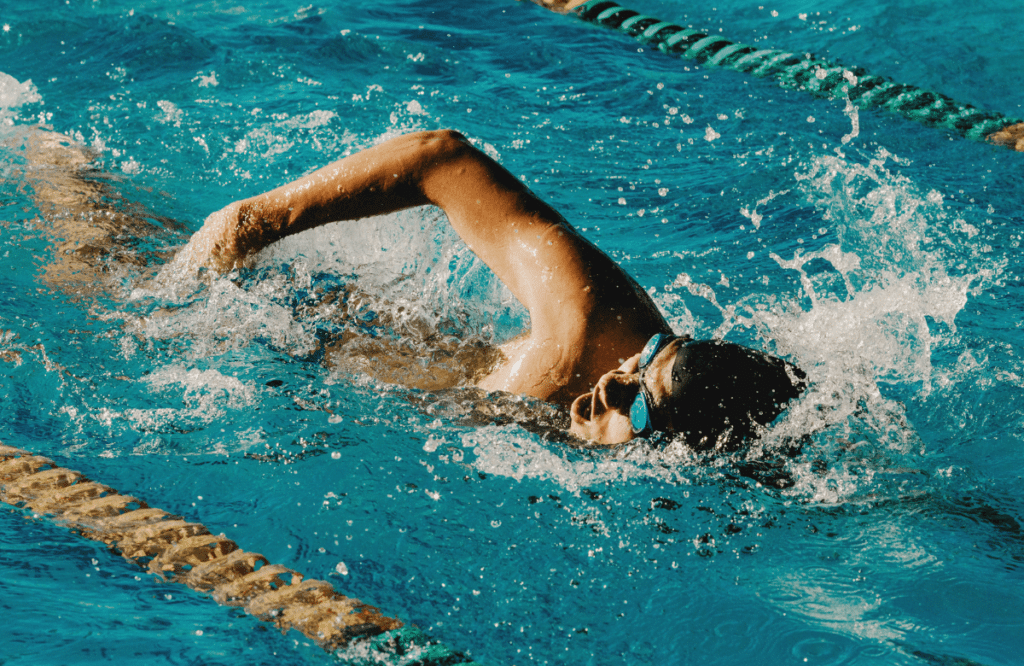
What Should You Do on Rest Days?
With 3–4 days off per week, depending on your training regimen, you’ll have a lot of free time on your hands. It may not suit your fitness goals or be a good use of your time to sit around on your rest days, so what should you do?
If you decide to do some physical activity on your rest days, it’s best to do low-intensity exercise, like the following:
- Walking
- Gentle cardio
- Slow jogging
- Biking
- Yoga
- Swimming
- Sports
Low-intensity exercises can aid the recovery process by getting your blood flowing, helping to pump oxygen and nutrients to your muscles. It’s important not to overdo it and keep things light, depending on your fitness level.
You might want to take one day a week to do absolutely nothing and engage in light exercises on the other days. If anything, take some time to stretch your muscles to help reduce soreness and improve flexibility.
What About Cardio?
It’s rare to see cardio mentioned in a full-body training schedule. Most programs are focused on developing strength, size, and technique. But cardio exercises are critical for your overall health, well-being, and endurance.
According to the American Heart Association, most adults should aim for two and a half hours of moderate-intensity aerobic exercise each week. Alternatively, the AHA recommends 75 minutes of vigorous cardio exercise each week.
So, what are your options?
Light Cardio
If developing muscle mass and strength are your goals, it’s best to do a bit of light cardio each week. Too much cardio can cause you to burn more calories and affect your muscle growth. It’s best to program one to three days of cardio each week, depending on your program.
We recommend low-intensity options like walking, jogging, swimming, or cycling.
These sessions shouldn’t be too intense and last around 30 minutes.
Brisk and even normal walking are excellent ways to incorporate cardio into your training week. Going for two 15-minute walks each day is enough to meet daily recommendations without overexerting yourself or losing too many calories.

Frequently Asked Questions (FAQ)
What Is the Best Full-Body Workout Plan?
The best full-body workout plan will depend significantly on your fitness goals, experience level, and lifestyle factors. That said, effective routines will revolve around compound lifts like the squat, deadlift, bench press, and overhead press. They should include 3-4 training days with rest days in between.
Is It Okay to Do Full-Body Training Every Workout?
Training your entire body every time you workout can be okay as long as you’re getting enough rest and recovery. Full-body routines typically include three days of training with rest days in between each session. This gives your muscles ample time to repair and recover, allowing you to get stronger.
Do Full-Body Workouts Build Muscle?
Yes, full-body routines can be very effective for building muscle, especially if you’re a beginner. These routines focus on heavy compound exercises that develop a lot of strength and size. That said, you will need to progressively overload the weight, eat enough protein, and get enough rest to see the best results.
Do 3-Day Full-Body Workouts Work?
Yes, three-day full-body routines can help you develop strength, endurance, and muscle mass. These programs are best suited for beginners who are learning the foundations. Advanced lifters might need more training volume to see results.


